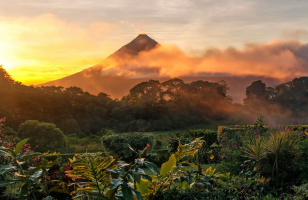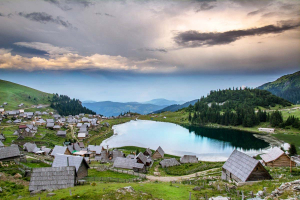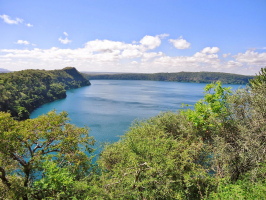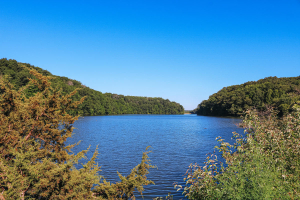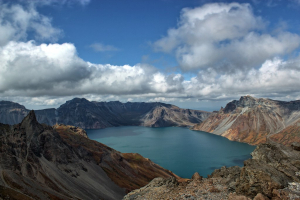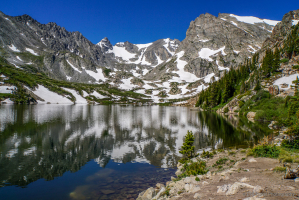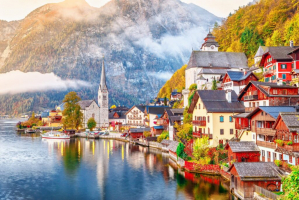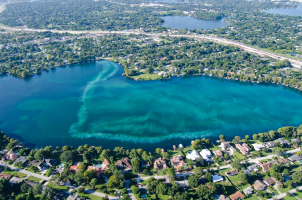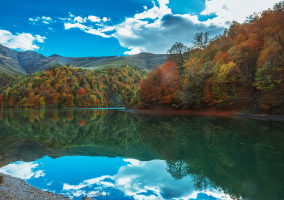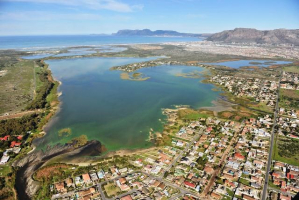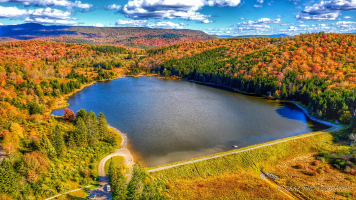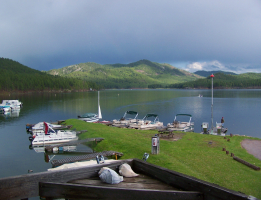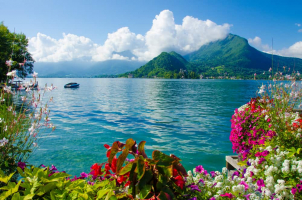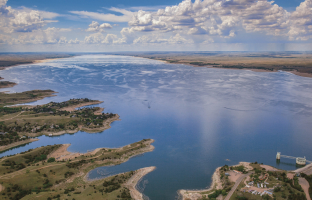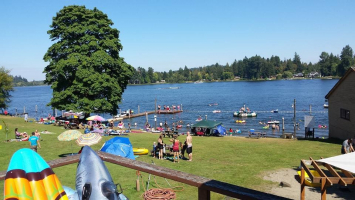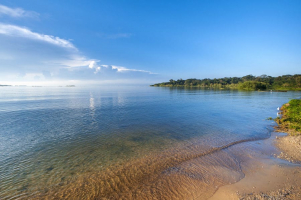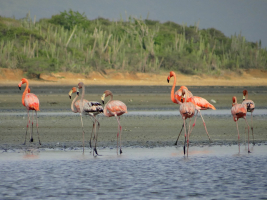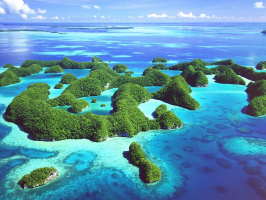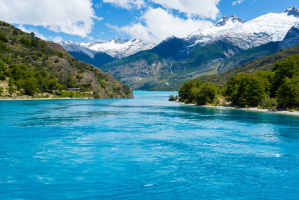Top 10 Best Lakes to Visit in Costa Rica
Costa Rica with its peaceful conservation areas, splendid beaches with sparkling blue waters, and outstanding adventure water sports, has long been known for ... read more...being one of the most beautiful tropical countries in the world. Therefore, speaking of Costa Rica, people easily think of its beaches and what comes with them. However, this country also has many beautiful lakes that showcase Costa Rica's rich biodiversity and abundant wildlife, attracting numerous eco-tourists for decades. In this post, Toplist will walk you through some of the most beautiful lakes to visit in Costa Rica.
-
Lake Arenal is located in the northern highlands of Costa Rica, between La Fortuna and Monteverde. With an area of 85 square kilometers, it is currently Costa Rica's largest lake. Lake Arenal is located at the base of the colossal volcano of the same name, and the areas surrounding the lake, including amazing landscapes, rocky slopes, and dense mountains, are as stunning as the lake itself.
Visiting Lake Arenal, you'll be amazed by the great view of the volcano, and a giant Arbol Ceiba Kapok tree that is over 400 years old. You'll also see many wild animals and other beauty of nature around the lake. Lots of tourists choose the Southern Walk to enjoy the lake's view to the fullest. The area surrounding Lake Arenal offers various activities as well, including walks, mountain cycling, and horseback riding.
Lake Arenal is also known for being one of the world's top three places for windsurfing, together with Lake Garda in Italy and George River in the United States. Many windsurfing lovers from all around the world come to the lake every year to have a unique experience of windsurfing in the majestic view. Moreover, kayaking, fishing and boat riding are also well-loved by both locals and tourists. All of these activities and the beauty of the lake itself sure made it a perfect destination that should not miss if you travel to Costa Rica.
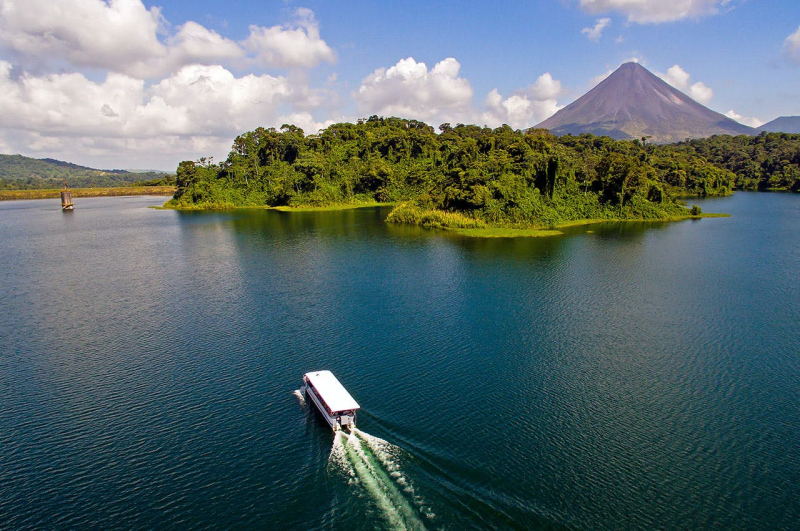
Photo: Misticopark.com 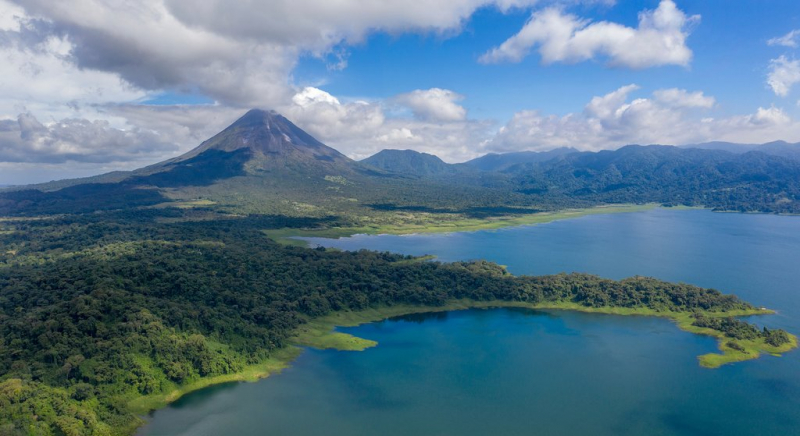
Photo: Kimkim -
Lake Bosque Alegre (The name of the lake in Spanish is Lake Happy Forest), is a freshwater crater lake located in the northern highlands of Costa Rica. This lake is part of a complex of lakes comprising 3 lakes that are part of the Bosque Alegre Wildlife Refuge. The three lakes include Lake Hule, Lake Congo and Lake Bosque Alegre. All of them are beautiful and attract many eco-tourists every year, so we’ll make sure to introduce all of them to this list.
Lake Bosque Alegre is one of the hidden jewels in the Sarapiqui region. To visit this lake, you might have to go on a hard journey, but the beauty of the lake’s view and nature will bring you peace of mind that is totally worth the trip. There is no secondary volcanic activity present, and there is a low possibility of volcanic gas fumes, so tourists are still coming here for the nature experience.
Being in the region, you can explore the rainforest for birds and wildlife. There are birding tours where you can see many local birds like toucans, parrots, and trogons,… and chocolate tours where you will be able to see how chocolate is grown and made here in Costa Rica. Both tours are unique, charming, informative and for that are loved by many tourists.
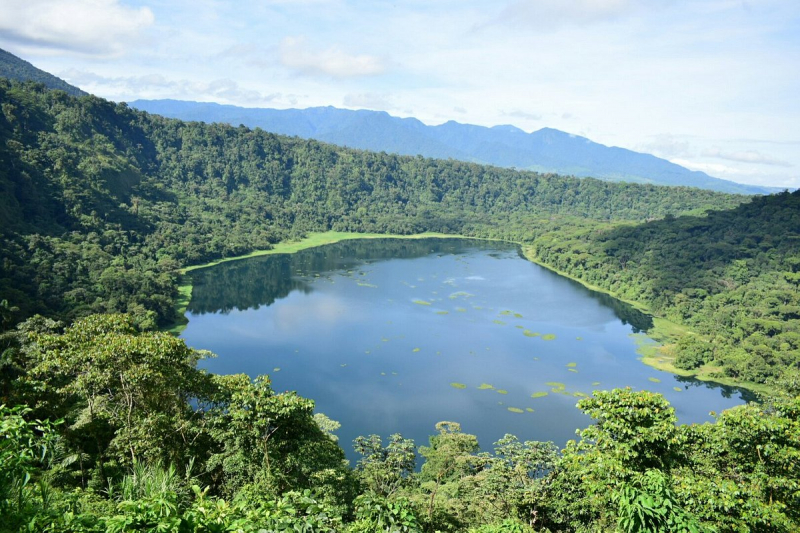
Photo: Tripadviser.com Video: reisfreaks -
Lake Hule is a freshwater crater lake located in the northern highlands of Costa Rica, and is part of a complex of lakes comprising Lake Hule, Lake Congo and Lake Bosque Alegre. The name of Lake Hule in Spanish translates to Lake of Rubber, due to the abundance of rubber trees nearby the lake. Lake Hule can be found at 400 meters above sea level and has an area of 40 Ha. and is approximately 75 meters deep which makes it the deepest natural lake in Costa Rica.
You will only have to take a short walk to get to the lake (about 500 meters) through a trail surrounded by lush nature. The area surrounding lake Hule is home to different species of flora and fauna and it protects the water sources for the area of Río Cuarto in Alajuela. You can just walk around the lake and discover the beauty of nature along the way. Many tourists enjoy coming here to hike and take marvelous pictures of the majestic lake view.
Aside from the beautiful view and nature, Lake Hule is perfect for an energizing swim since the water is surprisingly clear and warm. Many tourists who came here loved diving into the green water and enjoying a refreshing and peaceful experience.
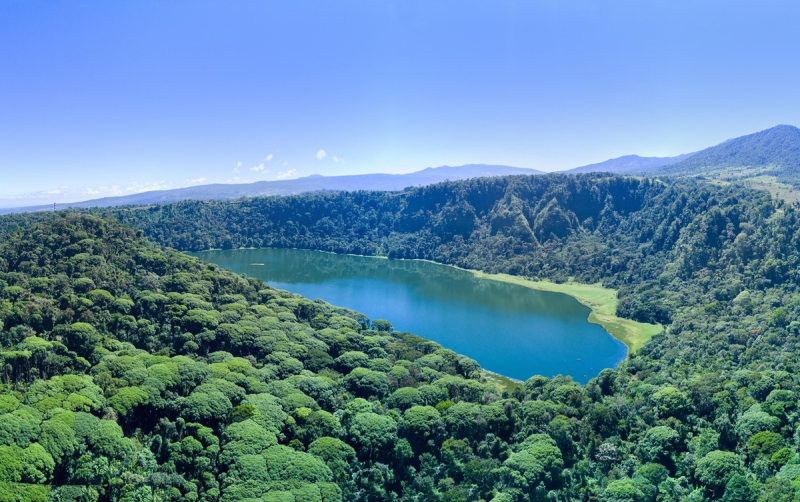
Photo: ecoterracostarica.com 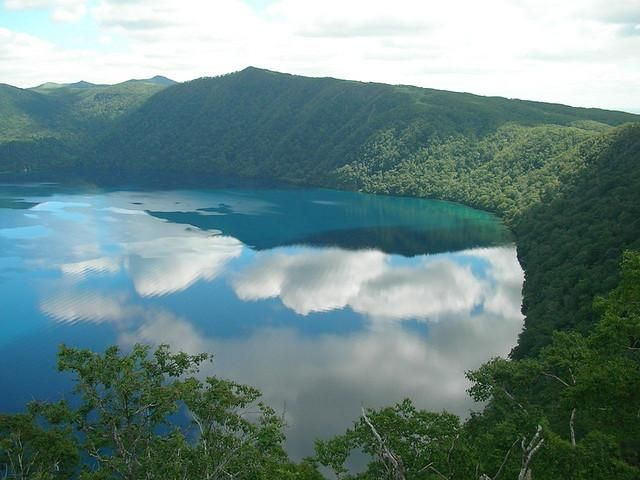
Photo: Lorena Calderón -
Lake Congo is a freshwater crater lake located in the northern highlands of Costa Rica. This is the third and last lake that is part of a complex of lakes in the Bosque Alegre Wildlife Refuge. If you want to visit Lake Congo, just take a short walk through a different trail from lake Hule, and you will get there in no time.
Lake Congo is a perfect spot for those that are constantly seeking new adventures and enjoy discovering places in Costa Rica that tourists hardly ever hear of and locals many times don’t take the time to visit. This lake is will give you the best experience in which you can explore the beautiful nature of Costa Rica that is almost “untouched” by a human. You will get to experience some of the most naturally intense trips of your life. Some of the usual wildlife you will get to see in the area are birds, armadillos, wild ducks, congos and white-faced monkeys.
You are welcome to take any sort of flotation device to the lake such as a kayak or a small boat, as long as you don’t damage or contaminate it. The lake’s water here is of a surprising and beautiful green color. And the view around it is definitely worth a boat ride through the lake.
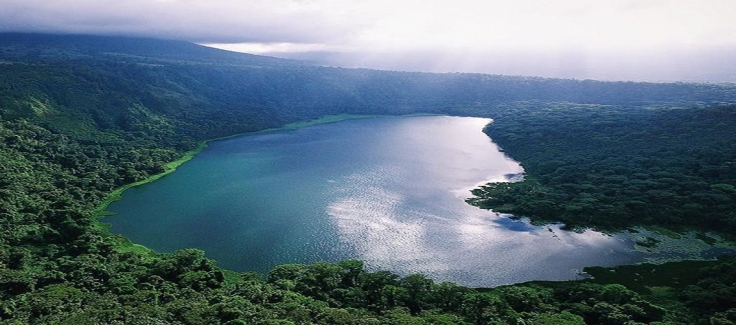
Photo: www.solidcarrental.com Video: German Di Manzo -
Lake Botos is a crater lake located inside the Poás Volcano National Park. As part of one of the most visited national parks in the country, this is a famous spot on the trail to visit Poás Volcano that every hiker would love to visit, and therefore greatly benefits the tourism industry of Costa Rica.
In contrast to the hot volcano with a hot acidic lake down at the bottom constantly steaming like a fire-breathing dragon snoring, lake Botos and the forest of thick trees around it stand out with majestic scenery. The surrounding forest is classified as tropical, subtropical, and some páramo vegetation. There are around 23 algae species there. Walking through the forest, you’ll be reminded of the creepy forest in the Wizard of Oz. After passing through the forest, you’ll see the arrestingly beautiful lake Botos. The lake itself is around 7,540 years old, and drains through Angel River, with beautiful blue and crystal clear water. This lake is called “a literal paradise” by many tourists who have been there.
Unfortunately, you can only witness the lake from afar, since there is no trail down that allows you to venture any further to the literal lake. But looking at the lake and enjoying the picture-perfect beauty alone sure is an experience you won’t forget.
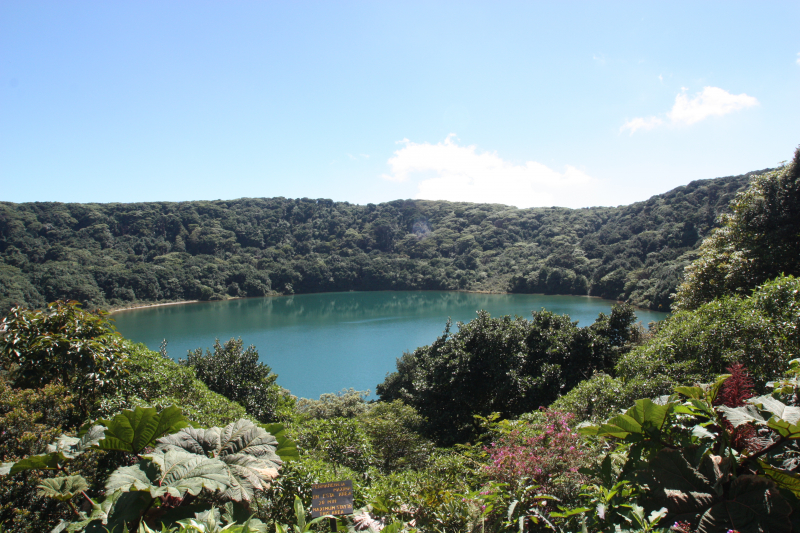
Photo: Wikipedia 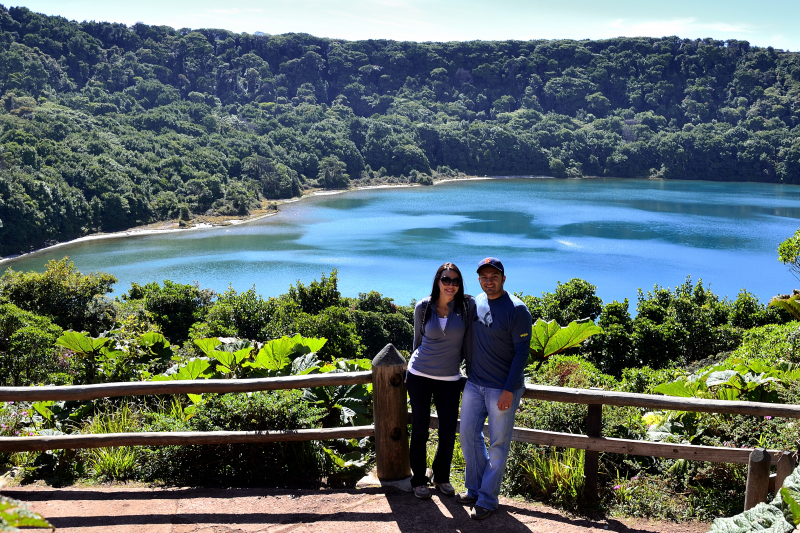
Photo: facesandplacesbyjacob.wordpress.com -
Lake Cote, originally known as Lake Cóter, is a freshwater crater lake located in the northern highlands of Costa Rica. It is known to be the largest natural lake in Costa Rica. If you’re looking for a more “off the beaten path” place to visit in Costa Rica or if you’re into the more weird and curious destinations, this might just be the perfect place for you.
Lake Cote holds great cultural importance, particularly to the indigenous Maleku communities who bestowed the lake its name. The lake has a heart-like ovoid shape, and for that earned the name “Cote”, because in Maleku, Coter or Cote means peace and love. The shape of the lake alone inspires many photographers to take pictures of it from above. One of the very special reasons that make this lake famous is a picture taken above it on 4 September 1971, during an aerial survey by the National Geographic Institute of Costa Rica. In the picture, there was a strange object that looks like a UFO (See picture below).
Lake Cote is more of a scenic destination as there really isn’t anything to do at the lake itself. Just follow the route and drive around the lake, take pictures and soak in the arrestingly beautiful view.
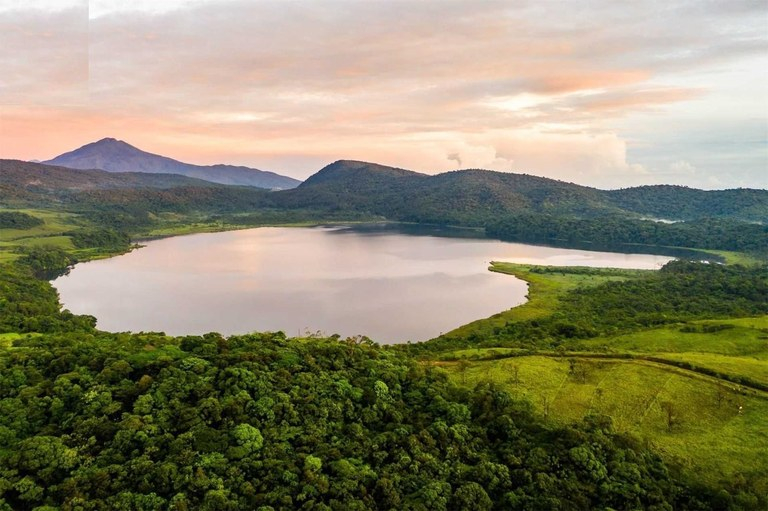
Photo: kraincostarica.com 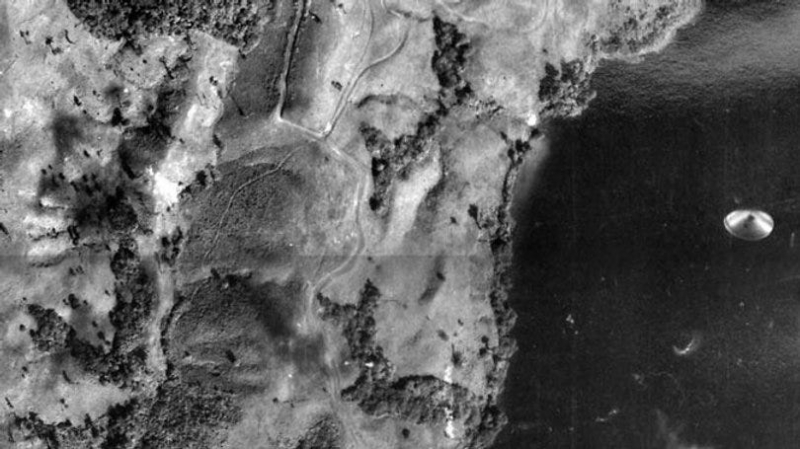
Photo: www.crcdaily.com/p/costa-rica-lake-cote-ufo -
Lake Poco Sol is another volcanic lake with a long history, located in the Cordillera de Tilarán in Costa Rica. The lake lies at an altitude of 789 meters, about 11.5 meters in depth. In Spanish, “Poco Sol” means “Litter Sunshine”. People believe that the lake earns its name because of how shiny and stunning it is in the middle of the forest surrounding it.
In the lake and the area around it, you can see volcanic features including tuffs, lava flows, lahar deposits, and breccia. Lake Poco Sol may be a crater from a phreatic explosion or a landslide scar. It has sulfur deposits, hot springs, and mud pots. The area has been investigated for the possibility of obtaining geothermal energy from it. Therefore, if you’re a geography expert, this is the perfect place for you to explore in Costa Rica.
Aside from geographical value, lake Poco Sol also has breathtakingly beautiful nature that was described as “a nature paradise”. Visiting the lake, you’ll get to see the stunning lake, one of the most beautiful forests in Costa Rica, and volcanic remnants, all in the same place.
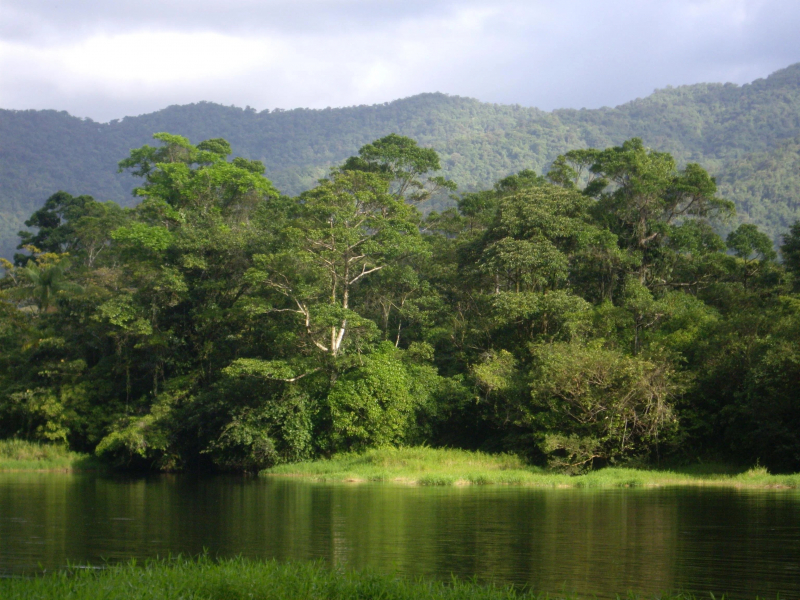
Photo: Minube 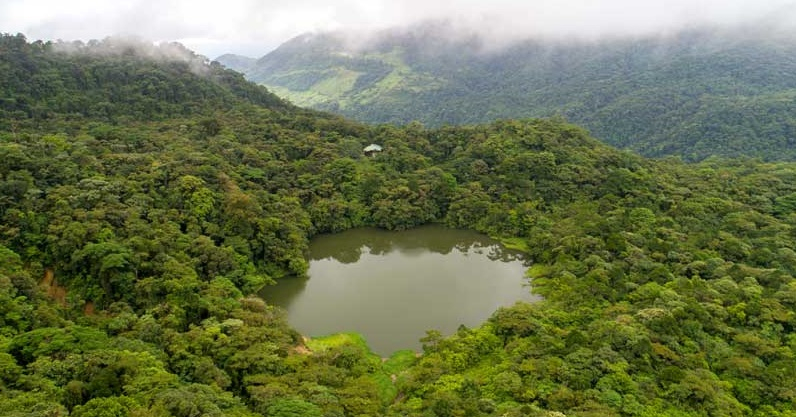
Photo: Mytanfeet -
Lake Pozo Verde, in Spanish means “lake green pond”, and is a lake of volcanic origin in San Carlos, Alajuela province, Costa Rica. It is part of the Juan Castro Blanco National Park, on the slopes of Porvenir Volcano. The lake is a famous spot in the National Park and attracts many tourists every year.
To get to Lake Pozo Verde, you will have to go on a hike for about 3km. This journey could be a little bit challenging for some, but once you get there, the views, landscapes and experience will definitely be worth all the effort. The journey will take you through a cloud forest, then let you pass between mystical pastures with stones full of moss and small springs of crystal clear water. There you reached the famous green lake!
The water of Lake Pozo Verde is warmer than the water of the rivers that surround the park, perfect for swimming after a tiring journey. The only consideration or recommendation is to take swimming or water shoes with you to avoid the grass or mud when entering the water. After swimming, you can dry off and enjoy a picnic on the grass right in front of the lake. Lots of tourists enjoy this experience as they feel truly connected to the nature of the place.
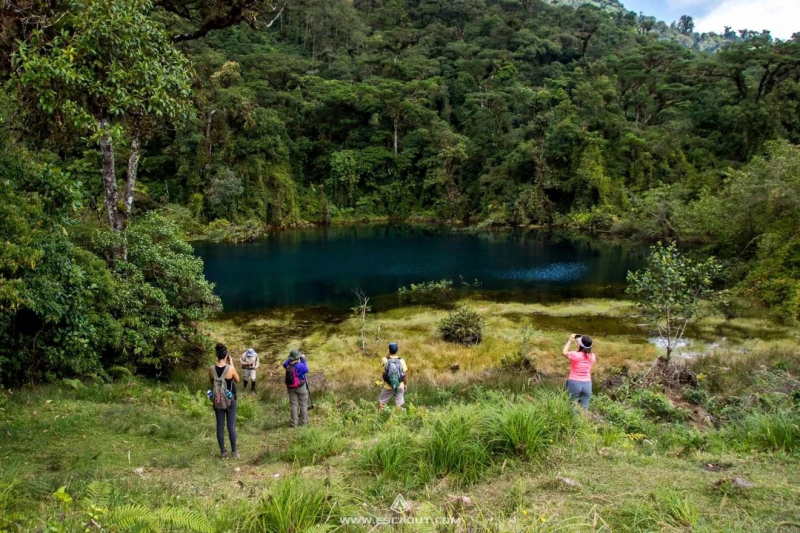
Photo: Escaout.com Video: Repretel Costa Rica -
It is not wrong to say that the northern highlands of Costa Rica is the land of beautiful lakes. In the region, you can find yet another freshwater crater lake that is Lake Río Cuarto. Information from the National Seismological Network of the University of Costa Rica (RSN-UCR-ICE) indicates that the Río Cuarto Lagoon has an area of 33 hectares and its maximum depth is about 66 meters; that is why this lake is currently the deepest natural lake in Costa Rica.
Lake Río Cuarto is a wonderful site worth visiting for its ecological wealth and biodiversity. It is also a geological treasure sculpted by ‘Mother Nature’ over thousands of years. A flat-undulating morphology is seen west of the lagoon. In actuality, the lava (material of volcanic origin) rocks that make up its walls are nourished by tiny waterfalls that cascade down the lake's walls.
Lake Río Cuarto is a dream site, reflects green and, sometimes, reddish tones over the water's surface. If you fly through this lake on a helicopter, you will be amazed by the unique deep blue color that stands out in the middle of the green forest surrounding it. Walking around the lake, from a comforting sight point, you can watch how the blue sky clouds are reflected in its green waters.
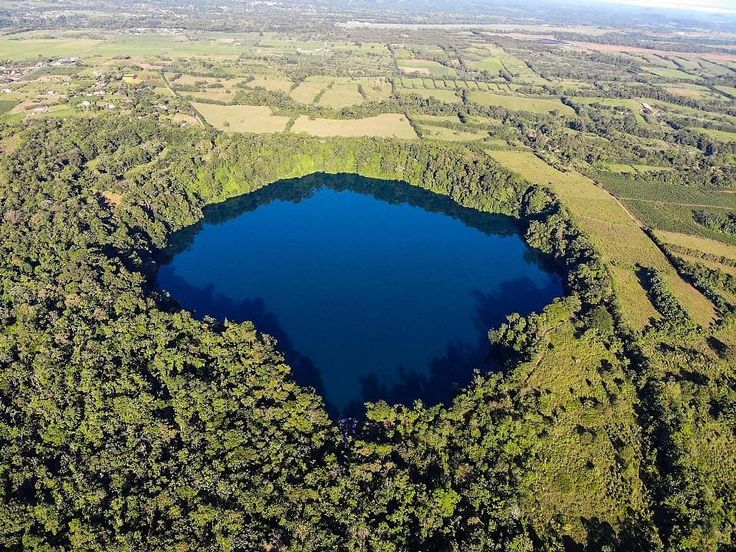
Photo: Katherine Saborío L. Video: La Piña Colada CR -
The Cachí Dam, an arch dam north of Tapantí National Park, to the east-southeast of Cartago in Cartago Province created Lake Cachi - Lake Cachi is an artificial lake in central Costa Rica. This lake lies right next to the road to the Tapantí National Park, so it is very easy for tourists to get a good look at the lake even while they’re driving.
The best way to fully enjoy Lake Cachi and its view is by going for a pleasant bicycle ride around it. You will be able to enjoy your ride at the same time that you admire the splendid and lush greenness that surrounds the lake. You can always stop to breath in the fresh air, and take some pictures to remember the moment. If you keep riding, you will reach the streets of the charming village of Cachí, which is only 1 km from the lake. Built in the 1970s, it was one of the first hydroelectric projects in Costa Rica. It has an installed capacity of 102 MW with three units of 34 MW capacity each.
Nearby in the area, there is also the Casa del Soñador House. This is also a famous spot for being the house-workshop of the well-known sculptor Macedonio Quesada. After visiting Lake Cachi and the village, you can always come to this place to see how a genius created his art.
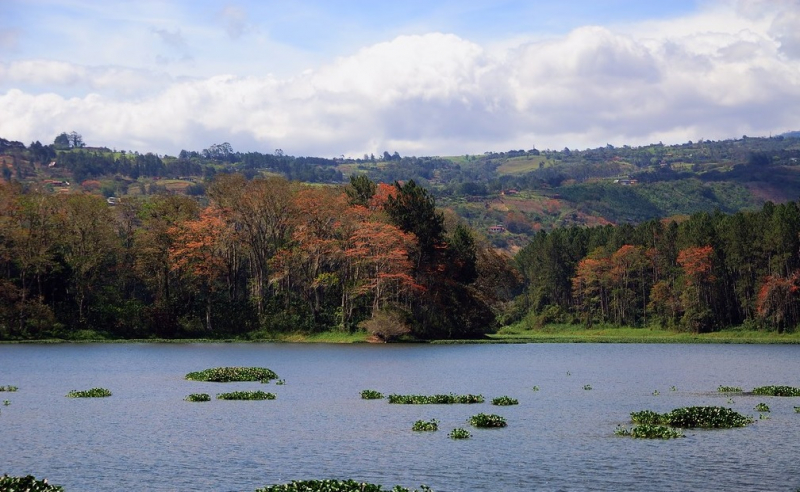
Photo: www.flickr.com/photos/pontfire/8781353084 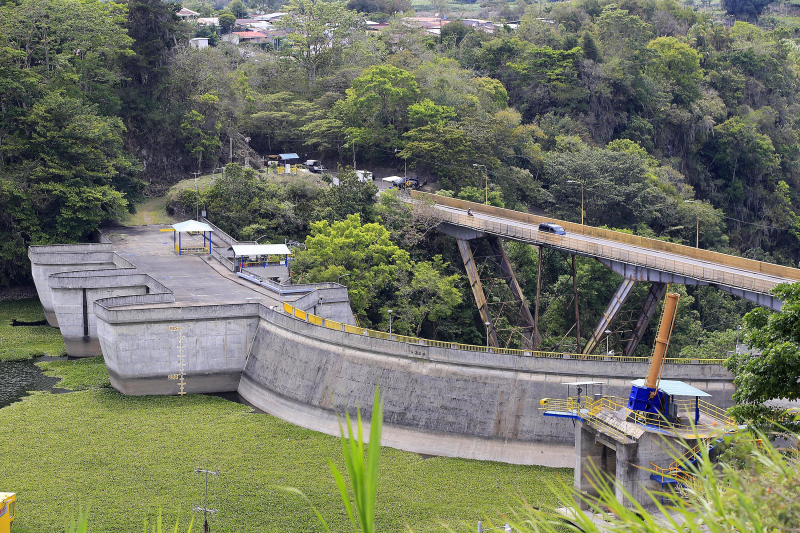
Photo: www.nacion.com












